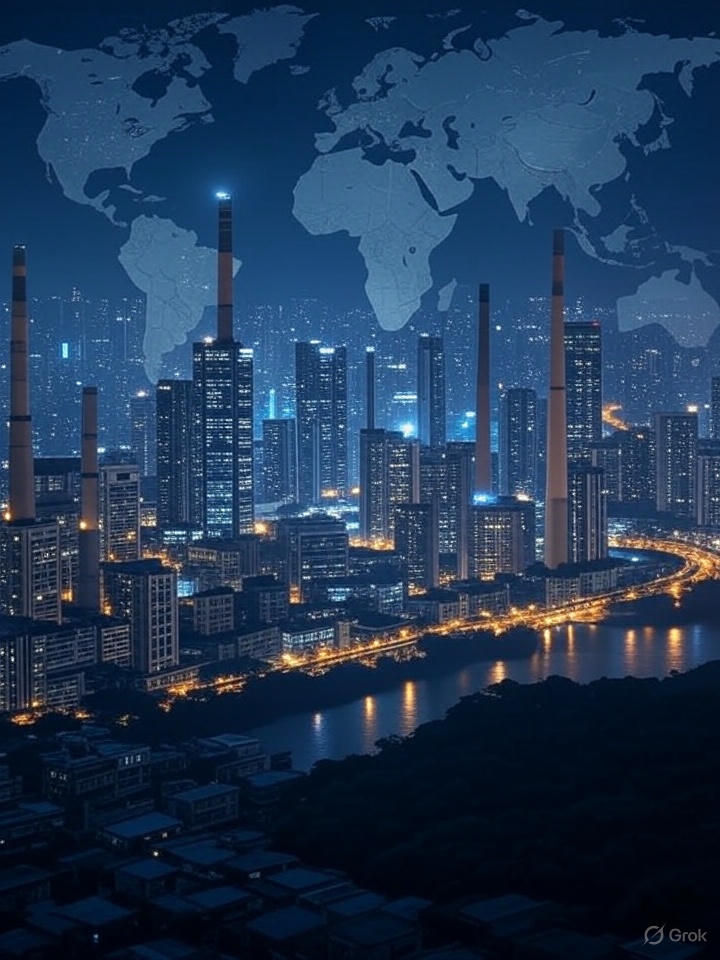The Secrets of the Grain - India’s Rice
- thebrink2028
- May 30
- 4 min read

Rice isn’t just India’s staple, it’s a global powerhouse, a currency of culture and commerce. In 2025, India’s rice exports are set to dominate the world stage, with jaw-dropping volumes and profits that could make your head spin. But what’s fueling this grain-fueled gold rush? Who’s pocketing the billions? And why are some rice varieties grown only in specific corners of India? From shadowy government schemes to ancient varieties making a comeback, The Brink 2028 readers, this is no ordinary rice tale.
The Billion-Dollar Export Bonanza
India is poised to export a staggering 24 million tonnes of rice in the 2025-26 marketing year (October 2025–September 2026), capturing 40% of the global rice trade. That’s nearly three times more than any other country, leaving competitors like Thailand and Vietnam in the dust. The financial haul? A cool $12.21 billion projected for the rice market by 2033, with exports alone contributing over $10 billion in 2025, driven by both premium Basmati and non-Basmati varieties. In fiscal year 2025 (April 2024–March 2025), India exported 19.86 million tonnes by March 25, including 5.94 million tonnes of Basmati ($3.5 billion) and 9.04 million tonnes of parboiled rice. Non-Basmati white rice (3.32 million tonnes), broken rice (0.79 million tonnes), and other varieties (0.76 million tonnes) filled the rest.
India’s rice exports in 2022 were worth $9.6 billion, but non-Basmati varieties outstripped Basmati in volume since 2020, signaling a shift in global appetites. Why? Cheaper non-Basmati rice is flooding markets like Senegal and Djibouti, where affordability is preferred over aroma.
Broken Rice’s Secret Market
Broken rice, a milling by-product, hit 3.9 million tonnes in exports in 2022, mainly to China for animal feed and African nations for budget meals. In 2025, after export bans were lifted in March, broken rice exports surged by 45% year-on-year. Yet, farmers earn just ₹0.75/kg for common rice, while exporters rake in $375/tonne.
Who’s pocketing the profit?
Farmers lose money even at Minimum Support Prices (MSP), raising questions about middlemen and export houses skimming the cream.
Thebrink Idea: Farmers can bypass exporters via digital cooperatives, selling directly to global buyers. Blockchain can ensure fair pricing, but will powerful lobbies allow it?
Government Schemes: The Hidden Hand
India’s rice export boom isn’t just about fertile fields, it’s backed by strategic government schemes. The Minimum Support Price (MSP) ensures farmers a baseline income, but it favors large players. In 2024-25, MSP for paddy was hiked, yet 83% of farmers sold below or at MSP, with smallholders hit hardest. The Merchandise Exports from India Scheme (MEIS) offers a 5% subsidy on non-Basmati exports, boosting competitiveness against Thailand and Vietnam. The Agricultural and Processed Food Products Export Development Authority (APEDA) is developing Harmonised System of Nomenclature (HSN) codes for unique varieties like Kalanamak and Black Rice to streamline exports.
Mitti Labs’ Methane Mission
In June 2024, Mitti Labs launched five projects across 30,000 hectares, involving 40,000 farmers to cut methane emissions and improve water security. The result? A 25-40% yield increase in Chhattisgarh’s FullPage Rice Cropping Solution trials, slashing greenhouse gases by 25-30%. But here’s the catch: only 1% of farmers can access such programs due to funding gaps. Is the government prioritizing exports over sustainability?
India’s rice exports dropped 9.6% in 2023 due to bans imposed to control domestic prices, yet global prices soared 10%, hurting poor consumers in Africa. Why prioritize local stability over global food security?
Thebrink Idea: Should India create a “Rice Export Fund” to subsidize sustainable farming tech for smallholders, ensuring both profit and the planet will also benefit.
The Rice Varieties: Names and Origins
India’s rice diversity is a cultural treasure, with over 6,000 varieties. Here are the stars of 2025:
Basmati: Originating in the Himalayan foothills (Punjab, Haryana, Uttar Pradesh), its long, aromatic grains dominate exports, fetching premium prices.
Kalanamak: A fragrant, black-husked rice from Siddharthnagar, Uttar Pradesh, revived from near-extinction. Its Buddhist heritage makes it a niche export.
Ponni: A South Indian staple from Tamil Nadu’s Cauvery Delta, soft and ideal for idli and dosa.
Sona Masoori: Grown in Andhra Pradesh and Telangana, this medium-grain rice is a domestic favorite but gaining export traction.
Chak Hao (Black Rice): From Manipur, dubbed the “Queen of Rice” for its antioxidant-rich grains, now eyed for premium markets.
Japonica Varieties: Cultivated in Himachal Pradesh and Assam’s hills, varieties like Koshihikari are tested for Japan’s picky import market.
Kalanamak’s Revival
In Siddharthnagar, a 2023 government push revived Kalanamak, boosting farmer incomes by 40% at ₹80/kg versus ₹20/kg for standard rice. Yet, only 10% of farmers grow it due to seed scarcity. Why isn’t this superfood scaled up?
Thebrink Idea: India must market Kalanamak as a global “superfood” like quinoa, leveraging its cultural story to command triple the price.
The Roots of Rice
India’s top rice-producing states, West Bengal, Uttar Pradesh, Punjab, Tamil Nadu, and Andhra Pradesh account for 72% of the nation’s 135 million tonnes in 2023.
West Bengal: Fertile Gangetic alluvial soils and heavy monsoons (100 cm+ rainfall) make it ideal for varieties like Gobindabhog and Tulaipanji.
Uttar Pradesh: The Gangetic plains’ clayey loam and irrigation support Basmati and Kalanamak.
Punjab: Laser-leveled fields and AI irrigation yield 4,393 kg/hectare.
Tamil Nadu: The Cauvery Delta’s tropical climate and clayey soils favor Ponni.
Andhra Pradesh: The Krishna-Godavari Delta’s fertile soils and GM trials drive 8.64 million tonnes.
Producing 1 kg of rice takes 3,500 liters of water.
-Chetan Desai (chedesai@gmail.com)


